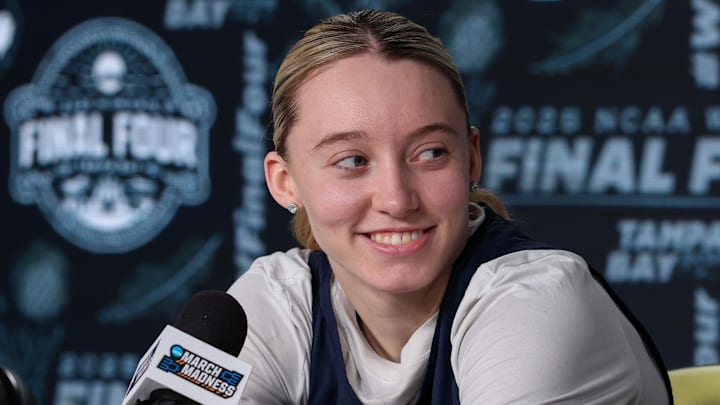South Carolina and UConn put on a show Friday night in the Women’s Final Four, blowing out Texas and UCLA, respectively, to advance to Sunday’s championship game.
Amalie Arena in Tampa was sold out, and the Tampa Bay planning committee ensured there was plenty for visitors to do away from the court. USF was on its game as the host institution,
Everyone agrees that women’s college basketball is more popular than ever. Supporters claim that there are more good teams than ever before, and that is true.
Since 2015, six different programs have won national titles. UConn and South Carolina are the only programs with more than one win.
However, the gap between the top teams and those on the next level shows how far the game has to go.
Louisville coach Jeff Walz recently sounded the alarm.
“When I first got in, everybody played it, but you had only eight, nine schools that truly had a chance to get to a Final Four,” he told CBS Sports.
"Now, I truly believe it's 20, 25 depending on the year. I just wonder if it's going to be like, 'Hey, the ones who can afford this are going to be the ones who get the players.'”
With due respect to Coach Walz, I think he is way off base about those 25 potential Final Four teams. The numbers don’t support that claim.
In the first two rounds of the tournament, 17 games were decided by 30 points or more.
These were actual scores from some of the games: Notre Dame 106-54 over SFA, South Carolina over Tennessee Tech 108-48, Florida State beat George Mason 94-59 and then in the next round to LSU 101-71. LSU also beat San Diego State 103-48.
UConn beat Arkansas State 103-34, and two teams – UNC Greensboro and Lehigh – each scored just 25 points in their blowout losses.
Bear in mind that those losing teams were league champions and earned their way into the tournament. A very good USF team won 23 games and the American Athletic Conference but lost 101-66 to Tennessee in the first round.
This has been going on for a while. ESPN listed its picks for the top upsets over the years in the women’s tournament. Apart from the 1998 shocker when 16th-seeded Harvard eliminated top-seeded Stanford, the list focused mostly on games where the No. 13 seed knocked off a No. 4 team.
Yes, those are notable upsets, but that seems to happen every year in the men’s tournament.
Money is a big part of the problem.
This is the first year the NCAA will pay women’s teams that qualify for the tournament. The $15 million fund is paid out in “units” from that pot of money. Every time a team wins, it gets another unit.
The estimate is that Final Four teams will get about $1.3 million. The fund will increase over the next several years.
It’s a start.
The men’s tournament has had this system in place since 1991. Its total payout this year is $200 million.
While the best teams deserve larger shares, the system probably won’t help the small fry much if they’re one-and-done in the tournament.
There is also another development on the horizon that could shake the foundations of women’s basketball.
On Monday, it’s expected that a judge from the U.S. District Court of Northern California will rule on the landmark House vs. NCAA settlement that will allow schools to pay athletes directly from a fund capped at $20.5 million per school.
While coaches at power conference schools compete with their athletic directors for a larger share of the budget, smaller programs are unlikely to come close to allocating such a substantial amount of money.
The talent gap could grow wider, as if it wasn’t wide enough already.
For now, though, get ready to watch what should be an epic game on Sunday for the women’s championship. It’s the best of the best.
And if you think these two teams make it to the Final Four every year, well, it seems like they do.
March Madness is about Cinderellas and giant killers, but I guess they sat it out this year.
